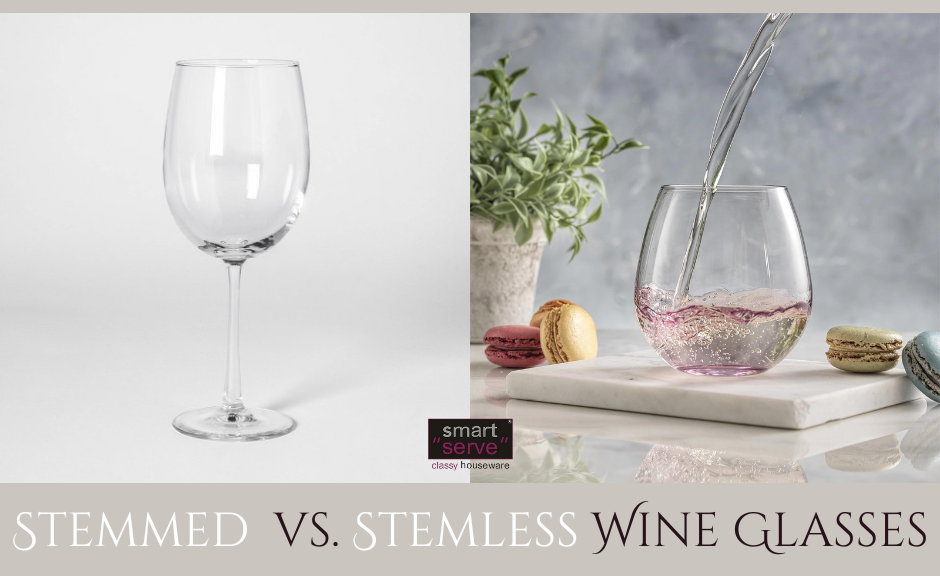
As a passionate home cook and wine enthusiast, I’ve discovered that the enjoyment of a fine vintage extends far beyond the bottle. The right wine glass can truly elevate the entire experience, transforming a simple sip into a symphony of flavors and aromas. You might be surprised to learn that the shape of your glass isn’t just about aesthetics – it’s a key ingredient in unlocking the full potential of your wine.
The Science Behind the Swirl: How Glass Shape Affects Flavor
Remember those high school science experiments where you learned that smell and taste are intricately connected? Well, that principle takes center stage in the world of wine tasting. The shape of your glass directly influences the concentration and release of those all-important ethanol vapors, the aromatic compounds that create the complex bouquet we associate with a good wine.
A fascinating 2015 Japanese study used specialized imaging techniques to visualize these vapors in different glass shapes. The results were clear: the geometry of the glass significantly impacted both the density and position of the aromatic molecules, ultimately affecting how the wine’s aroma, and therefore its taste, is perceived.
Big Bowl vs. Small Bowl: A Matter of Aromatic Intensity
Generally speaking, a wine glass with a larger, wider bowl allows for greater surface area, encouraging the wine to breathe. This increased exposure to air accelerates the release of ethanol vapors, resulting in a more pronounced and nuanced aromatic profile. This is particularly desirable for complex wines with intricate bouquets, as it allows the individual aromas to unfold and shine.
Conversely, a glass with a smaller bowl concentrates the aromas, creating a more focused and intense sensory experience. This can be ideal for lighter-bodied wines with delicate aromas, as it helps to capture and preserve their subtle nuances.
Stemmed or Stemless: A Matter of Personal Preference
While the bowl shape reigns supreme in flavor influence, the choice between a stemmed and stemless glass is largely a matter of personal preference and practicality.
- Stemmed Glasses: The classic stemmed design offers elegance and prevents your hand from warming the wine, which can be crucial for maintaining the ideal serving temperature, especially for white wines.
- Stemless Glasses: These modern and increasingly popular glasses offer a sleek aesthetic and are less prone to accidental spills. They are perfect for casual gatherings or outdoor settings.

Red Wine Glasses: Designed for Boldness and Complexity
Red wine glasses are generally characterized by their larger bowls and wider openings, features specifically designed to enhance the enjoyment of these robust wines.
- Full-Bodied Reds (Cabernet Sauvignon, Merlot): Opt for a tall glass with a large bowl, often referred to as a Bordeaux glass. This shape allows ample space for the wine to breathe, softening the tannins and allowing the complex aromas to fully develop. Wine Folly provides a comprehensive guide to different wine glass styles and their ideal uses.
- Light-Bodied Reds (Pinot Noir, Gamay): Choose a Burgundy glass, recognizable by its shorter, balloon-shaped bowl. This shape helps to concentrate the delicate aromas of lighter reds, delivering a more intense and focused flavor experience.

White Wine Glasses: Preserving Freshness and Delicacy
White wine glasses, on the other hand, tend to be smaller than their red wine counterparts. This design choice helps to maintain a cooler temperature and preserve the delicate aromas characteristic of many white wines.
- Full-Bodied Whites (Chardonnay, Viognier): These wines benefit from a glass with a bowl slightly smaller than a red wine glass but larger than a light-bodied white wine glass. This size strikes a balance between allowing for some aeration while still preserving the wine’s aromatic intensity.
- Light-Bodied Whites (Sauvignon Blanc, Pinot Grigio): Reach for the smallest of the wine glasses for these refreshing wines. Their narrow shape minimizes the wine’s surface area, helping to maintain a cool temperature and preserve the delicate floral and fruity aromas.
Beyond the Glass: Other Factors Influencing Wine Enjoyment
While the right glass can significantly enhance your wine-drinking experience, other factors also come into play:
- Serving Temperature: Serving wine at the correct temperature is crucial for showcasing its full flavor potential. White wines are generally served chilled, while red wines are typically served at slightly cooler than room temperature.
- Decanting: Exposing wine to air can soften tannins and enhance aromas, particularly for younger, more tannic red wines.
- Food Pairing: The right food pairing can elevate both the wine and the dish, creating a harmonious and memorable dining experience. The Spruce Eats offers a comprehensive guide to wine and food pairing.
Cheers to the Journey of Wine Appreciation
Ultimately, the best wine glass is the one that brings you the most enjoyment. Don’t be afraid to experiment with different shapes and sizes to discover what works best for your palate and preferred wine styles. Remember, wine tasting is a journey of exploration, and each sip is an opportunity to savor the nuances and complexities of this beloved beverage.






